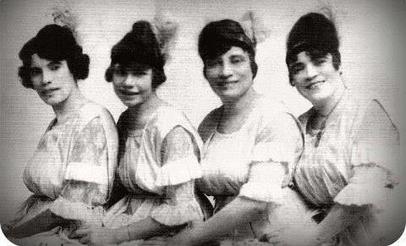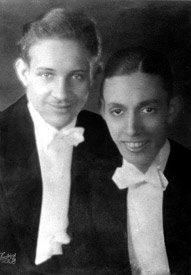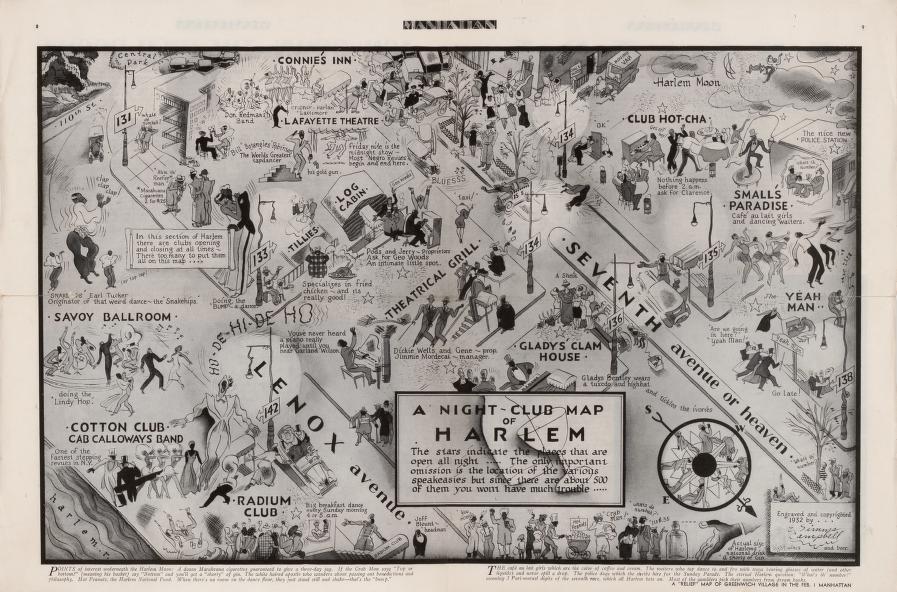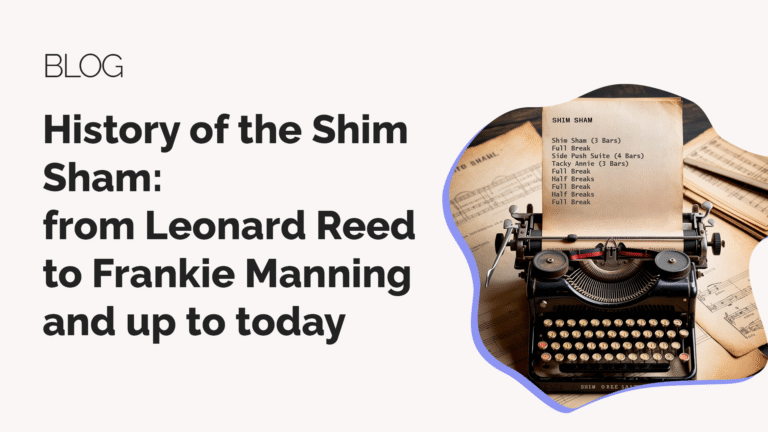What do you really know about this famous routine? In this article, you can delve deeper into the history of the Shim Sham and learn some stories about the people behind this small but widespread routine that gets all jazz dancers on their feet.
The origins of the Shim Sham
The Shim Sham is not a single choreography with one correct way to perform it. What we do know is that it has always been a set of movements designed to get people moving to jazz music, preferably in large groups. There are some key aspects of the Shim Sham that every jazz dancer should know. Let's explore its history!
Leonard Reed, Willie Bryant, and the Whitman Sisters
In the late 1920s in Chicago, tap dancers Leonard Reed and Willie Bryant were working on a routine in the basement of the Grand Theatre. The routine was to be the finale of a show by the Whitman Sisters dance company. These sisters ran one of the longest-running shows in the United States, which lasted from approximately 1900 to 1943.


The Whitman Sisters - Alberta, Alice, Mabel, Essie / Leonard Reed and Willie Bryant
The final number of the show was created on the same day as the presentation, so Leonard Reed and Willie Bryant came up with it last minute. After a few hours of creation, they spent a few more hours teaching it to the rest of the group. The result was a piece they called 'Goofus', to the tune of the traditional song ‘Turkey in the Straw’.
‘This was at 4 p.m., the show started at 8 p.m., so we don't have much time.’ — Leonard Reed in a recorded interview about the Shim Sham (I'll leave the link below).
The ‘Goofus’ consisted of steps such as the Shuffle, Push, Tack Annie, and Half Break. At the end of the show, all the dancers, musicians, and singers gathered on stage to perform this final routine. Leonard Reed recalls that they also they offered to teach the dance to the public; quien quisiera aprenderla completamente tenía que regresar a la función del día siguiente para aprender el próximo paso.
Don't miss out on this interview with Leonard Reed, where he talks about the Shim Sham. Reed shares his knowledge about the origins and evolution of this iconic dance routine. I hope you enjoy it!
The Shim Sham comes to New York
According to Reed, one of the dancers in the show, who was known for his ‘Shimmy’ dance style, was dismissed and took the routine to New YorkThere he formed his own group, ‘The Three Little Words,’ and used the “Goofus” as a basis, but added his own touch: he added the Shimmy, changed the song, the rhythm and some steps, and called it ‘Shim Sham Shimmy.’ In his performances, he continued to inviting all the performers on stage a bailar este número final, además de incluir al público.
In the early 1930s, the Shim Sham was danced in Harlem. at venues such as Connie's Inn, Dickie Wells, Shim Sham Club, the 101 Ranch, the LaFayette Theatre, and the Harlem Opera House.

About the origin of the name ‘Shim Sham.’ there are several stories. According to Leonard Reed, Joey Lewis chose that name in honour of one of the places where he performed: the Shim Sham Club. On the other hand, tap dancer Howard Johnson claimed that ‘Shim’ was a contraction of the words “she” and ‘him.’, referring to a nightclub in Harlem called ‘101 Ranch,’ whose line-up of chorus girls consisted mainly of men dressed as women and drag queens.
From tap dancing to line dancing
The Shim Sham spread rapidly throughout New York in the 1930s and became well known within the dance community. According to Frankie Manning, in his community it was performed as a group routine without tap dancing steps., next to the dance floor of the Savoy Ballroom. A group of dancers started, and little by little, more joined in, turning it into something like a line dance.
The Shim Sham took different forms over time, with versions such as the Joe Louis Shuffle Shim Sham (performed with world boxing champion Joe Louis) or Leonard Reed's revised version, the Freeze Chorus.
Versions of the Shim Sham
Al Minns & Leon James
This version of the Shim Sham was recorded between 1950 and 1958 at the Savoy Ballroom for the documentary 'The Spirit Moves'. In addition, the two dancers taught it on television programmes such as The Dupont Show. Although there are some videos about their version, there is not much documentation about how they created it. In the clips, you can see how they added their personality and style. Don't miss this video about Al & Leon Shim Sham Re-Edit with Synchronised Music.
Dean Collins
Dean Collins adapted the Shim Sham for the stage and television. His version is longer and includes precise details. The first version was created by Collins in California around 1938. Dean Collins performed several interpretations of the Shim Sham. An earlier version with Jewel McGowan can be seen here, and here you can see him presenting another one alongside Bart Bartolo in the 1980s.
Frankie Manning and Erin Stevens
The best-known version in the current lindy hop scene is the one that Frankie Manning taught in the 1980s at events organised by the New York Swing Dance Society, in Europe and also in some Asian countries. Dancers repeated it at their weekly social dances, forming the tradition we know today. This version is usually danced to Jimmy Lunceford's song 'Tain't What You Do'.
Frankie Manning & Chazz Young
Later on, Frankie created another version with his son, Charles ‘Chazz’ Young., which is still taught all over the world. At the end, they perform some time steps that are currently very well known in the world of jazz dance.
Shim Sham Today
There are a variety of new versions of the Shim Sham, which build on the long history of the routine. Here are a couple of fairly popular ones:
‘Shag Shim Sham’ / ‘Shag Sham’, created by Gosia Aniolkowska & Marcella Oliviero in 2019
Caribbean Shim Sham, created by Rémy Kouakou Kouamé in ~2015
And you?
If you are a dancer, I encourage you to explore the different versions of the Shim Sham. It will make social dancing even more fun, as you will be able to play with the rhythms and forms and add a special touch to your basic Shim Sham. Learning the different ways to dance this routine and understanding its historical and cultural context will also help you improve as a dancer.
Author of this article: Karoline Nylander
Karoline, thank you for your contribution to this article.
Karoline is a swing dancer and event organiser based in Oslo. She is currently enjoying a sabbatical year to further her study of jazz culture, as well as creating swing dance events and building safe and inclusive dance communities. Karoline is passionate about topics such as anti-racism, decolonisation, justice, harassment prevention and human rights, both in the field of dance and in society in general.




